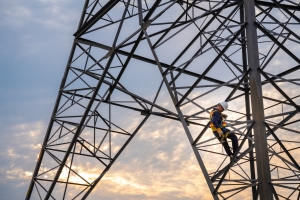Clean Energy Canada | Unlocking the true potential of Canada's clean economy
November 3, 2025

Canada finds itself at a critical inflection point. Rising geopolitical instability and a strained relationship with the US are forcing us to reconsider our place in the world and chart a new path to economic, energy and national security.
To its credit, Canada is responding with swift action and a multipronged approach. Federal and provincial governments have been working hard to break down internal trade barriers and build one Canadian market, while the EU and Asia have been top priorities for the prime minister’s trade diversification strategy. But as Canada deploys billions of dollars in government spending to transform its industries, redraw trade flows and fast-track major projects, we must also decide what kind of nation we want to build.
The One Canadian Clean Economy Task Force believes Canada can simultaneously safeguard its economy from the trade and tariff shocks of today while setting itself up to compete for the long term, ultimately reaping massive economic advantage from the global energy transition. There are barriers to realizing this vision, of course, but many of them are within our control.
First, it’s helpful to consider the federal government’s own One Canadian Economy Act, used to assess major projects against five criteria to determine whether they are in the national interest. Clean economy projects clearly meet the clean growth criteria, but importantly, they also score impressively on the other four.
They strengthen Canada’s autonomy, resilience and security. Canada’s critical minerals and materials, for example, will be key to helping us secure economic sovereignty and gain global leverage in trade relations. And biomass-powered district heating systems can help rural, remote and Indigenous communities reduce their reliance on diesel, offering a more energy secure way of heating homes.
Clean economy projects also provide many financial benefits to Canada and Canadians. A 2021 projection of Canada’s clean energy sector saw its GDP reaching $107 billion by 2030 with 600,000 jobs — and evidence suggests that most Canadians will see lower overall energy-related costs from a well-managed switch to electricity. Provinces across Canada are already taking action on this front. In fact, there are over 17 gigawatts of procurements, equivalent to over $31 billion, currently underway across Canada for wind, solar, and energy storage — and this number is expected to grow.
These projects likewise advance the interests of Indigenous nations, collectively the third-largest owners of clean energy assets across the country, almost entirely in renewables. BC Hydro’s 2024 Call for Power, for example, resulted in agreements for nine wind energy projects and a solar project that are almost all majority-owned by First Nations.
Finally, clean economy projects have a high likelihood of success. Wind, solar and energy storage are built much faster with lower cost overruns than other energy projects. Meanwhile, demand for the critical minerals that feed into these clean technologies — lithium, graphite, nickel, and cobalt — will grow two to five times by 2040. For context, minerals made up 21 per cent of Canada’s total merchandise exports in 2023.
That’s five out of five on the government’s criteria list.
But barriers do indeed exist, and this task force was brought together precisely to identify those roadblocks — and critically, how we can clear the way for Canada to build up the best version of its clean economy.
Project proponents often note, for example, that regulatory approval processes can be lengthy and complex, often with overlapping jurisdiction and duplicative requirements. Streamlining processes with the earliest possible Indigenous engagement is one of the vital solutions needed.
Workers similarly face barriers in the clean economy. A boilermaker apprentice in Northern Ontario may not easily be approved to work on a hydroelectric plant in Manitoba due to differences in apprenticeship requirements. Companies can struggle to find wind turbine technicians because there is no separate National Occupational Classification code for a wind turbine technician, used in labour market assessments. These inefficiencies are fixable.
Another one? A lack of coordinated electricity planning between provinces and inadequate transmission infrastructure means our industries don’t have access to the clean electricity they want and, thus, Canada is more reliant on US power. It’s past time for a “United Canada” grid initiative and more interregional planning.
And major delays in finalizing clean economy tax credits have historically created an uneven playing field between Canada and the US when it comes to attracting investment. Clean technology companies face additional barriers, too, as small- and medium-sized enterprises lack access to financing and face markets that can be challenging for new entrants.
One Canadian company making grid-management software couldn’t find a footing in Canada’s fractured electricity markets but won six contracts in two years in the UK. Increased domestic trade and leveraging government procurement — including the significant spending planned for housing and defence — could support Canadian clean construction materials and technologies, creating more pan-Canadian opportunities for local companies. And those tax credits are long overdue.
The list goes on — but so does the list of solutions. In fact, we came up with 30 actions federal and provincial governments should take immediately or in the long term.
While the U.S. retreats from clean energy, Canada has an opportunity to capture these investments and align with trading partners that realize clean equals competitive. We cannot control every obstacle the world puts up, but we can certainly dismantle the ones within our own borders. Our North Star Action Plan starts at home, but its destiny is skyward: a stronger Canada shining on the world stage.
This post was co-authored by Vittoria Bellissimo and Peter McArthur and first appeared in Canada’s National Observer.